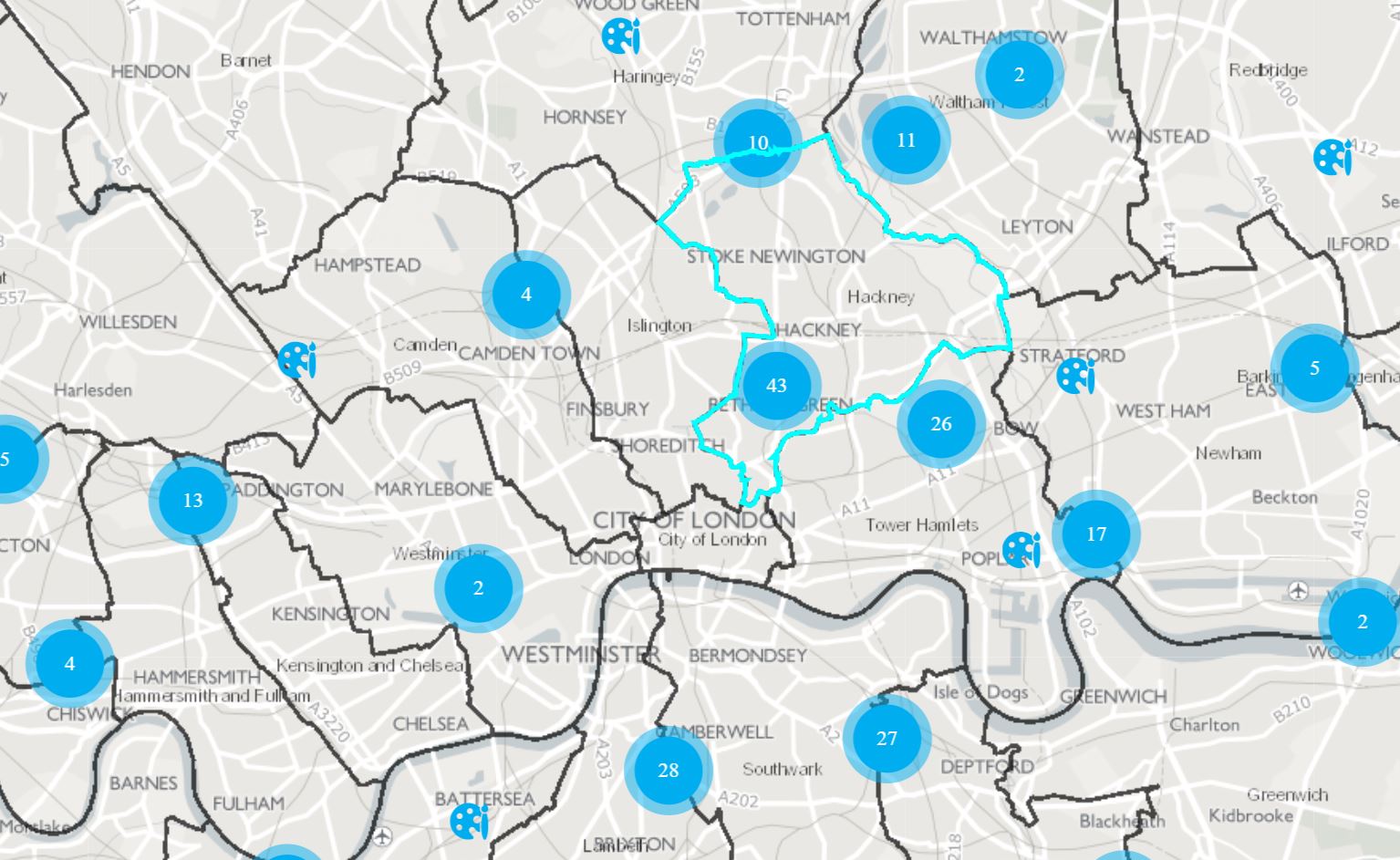For the first time ever, London’s huge variety of cultural infrastructure from pubs and music venues to recording studios and local libraries will be available online for free.
City Hall has launched a new interactive online map which captures the capital’s cultural riches for the first time.
The new map has collated London’s cultural facilities and locations, from pubs and LGBT+ venues, to music recording studios, community centres and local libraries – now available online for everyone one to use.
Deputy Mayor for Culture and the Creative Industries, Justine Simons, is asking Londoners, local authorities and cultural organisations to work with City Hall to create the fullest possible picture of the capital’s cultural infrastructure with the new map.
It has been published as part of the Mayor’s Cultural Infrastructure Plan, which is designed to protect and champion the capital’s cultural riches. The map and data has been released today alongside an online toolkit with resources to help local authorities, property developers, businesses and cultural institutions protect and grow the culture on offer in London.
In order to cement London’s place as an international cultural capital and protect these important spaces, the new Cultural Infrastructure Plan will show where London’s cultural infrastructure is located, highlight any gaps or risk areas, and enable business, local authorities and cultural leaders to support and develop London’s cultural venues. Now City Hall is asking Londoners, Councils and cultural institutions to contribute to the online map in order fully to capture the city’s cultural gems.
Culture plays a vital role in the capital’s economic success, making the city a place where people want to live, work and do business. The creative sector generates £52bn for London every year and is responsible for one in six jobs in the capital. Culture is the reason that four out of five tourists visit the city. However, there has been a worrying decline in London’s cultural spaces, with the numbers of LGBT+ venues and grassroots music venues stabilising in the last year following a decade of steep decline.
The Cultural Infrastructure Map paints a rich picture of culture across the city, from central London to outer-boroughs. The map currently reveals London has:
- 240 artists’ workspace buildings
- 71 skate parks
- 3,530 pubs
- 52 LGBT+ night-time venues, 94 grassroots music venues and 263 theatres
- 86 music rehearsal studios, 112 theatre rehearsal studios and 291 dance rehearsal studios
- 165 museums and galleries, with an additional 317 commercial and private galleries
- 903 community centres and 345 libraries
- 19,174 listed buildings but also 660 heritage at risk sites
- 319 buildings used for jewellery design and manufacturing and 5 large scale media productions studios
The map captures the current cultural highlights and clusters across the city, showing that:
- Enfield has the highest number of local libraries
- Lambeth has the highest number of skate parks
- Camden has the highest number of theatre rehearsal studios
- Camden has the highest number of community centres
- Westminster has the most pubs and the City of London has the biggest concentration of pubs
- Westminster also has the highest number of LGBT+ night time venues
- Hackney has the most grassroots music venues, followed closely by Camden
- Outside of central London, Richmond has the highest number of museums and public galleries
- Tower Hamlets has the highest number of fashion and design manufacturing businesses
- Hackney has the highest number of creative workspaces and of artists workspaces
- Hackney also has the highest number of music recording studios
- Ealing plays an important role in providing prop and costume hire outside central London
- Brent has a high concentration of music businesses, such as labels
- Croydon has the highest number of monuments outside of central London
City Hall is committed to protecting and improving the city’s cultural venues and the new Cultural Infrastructure Plan outlines an action plan to ensure London remains an exciting and vibrant city 24-hours a day.





